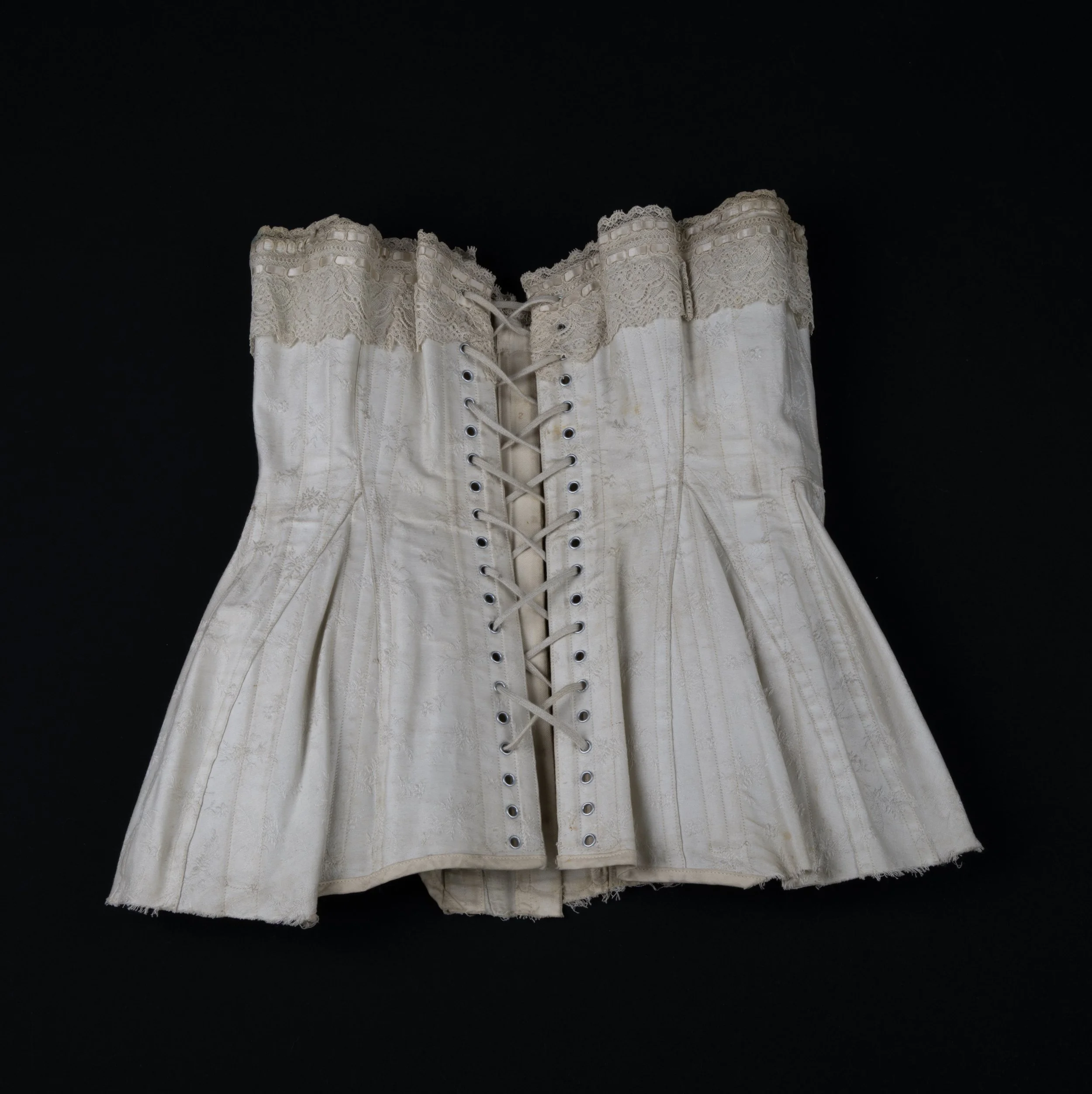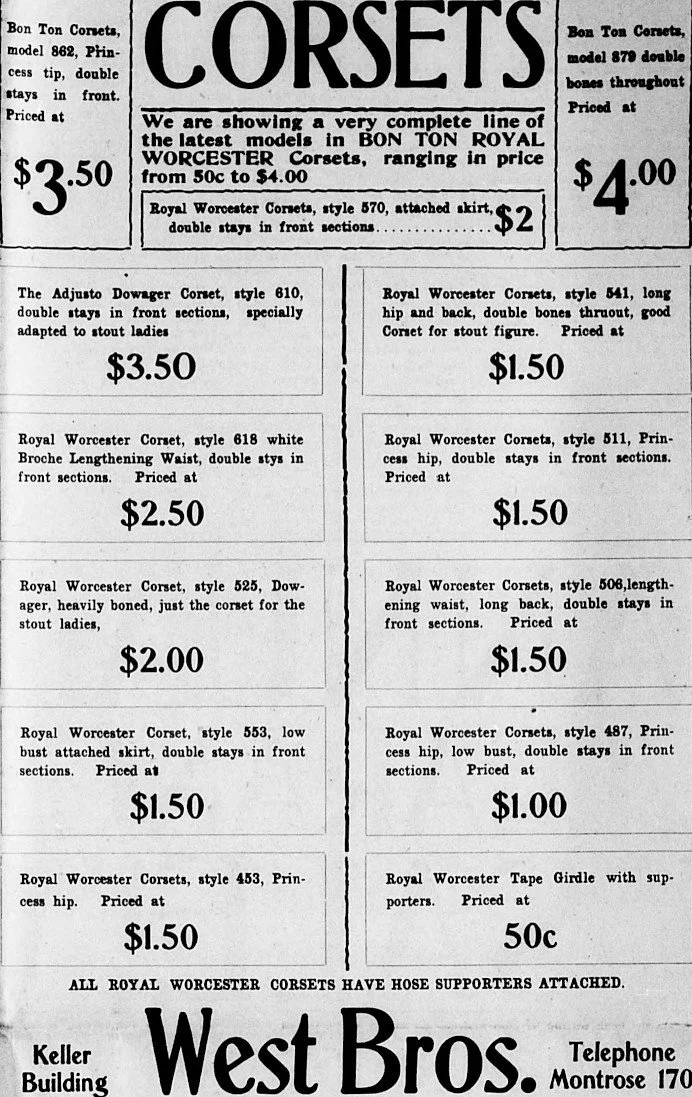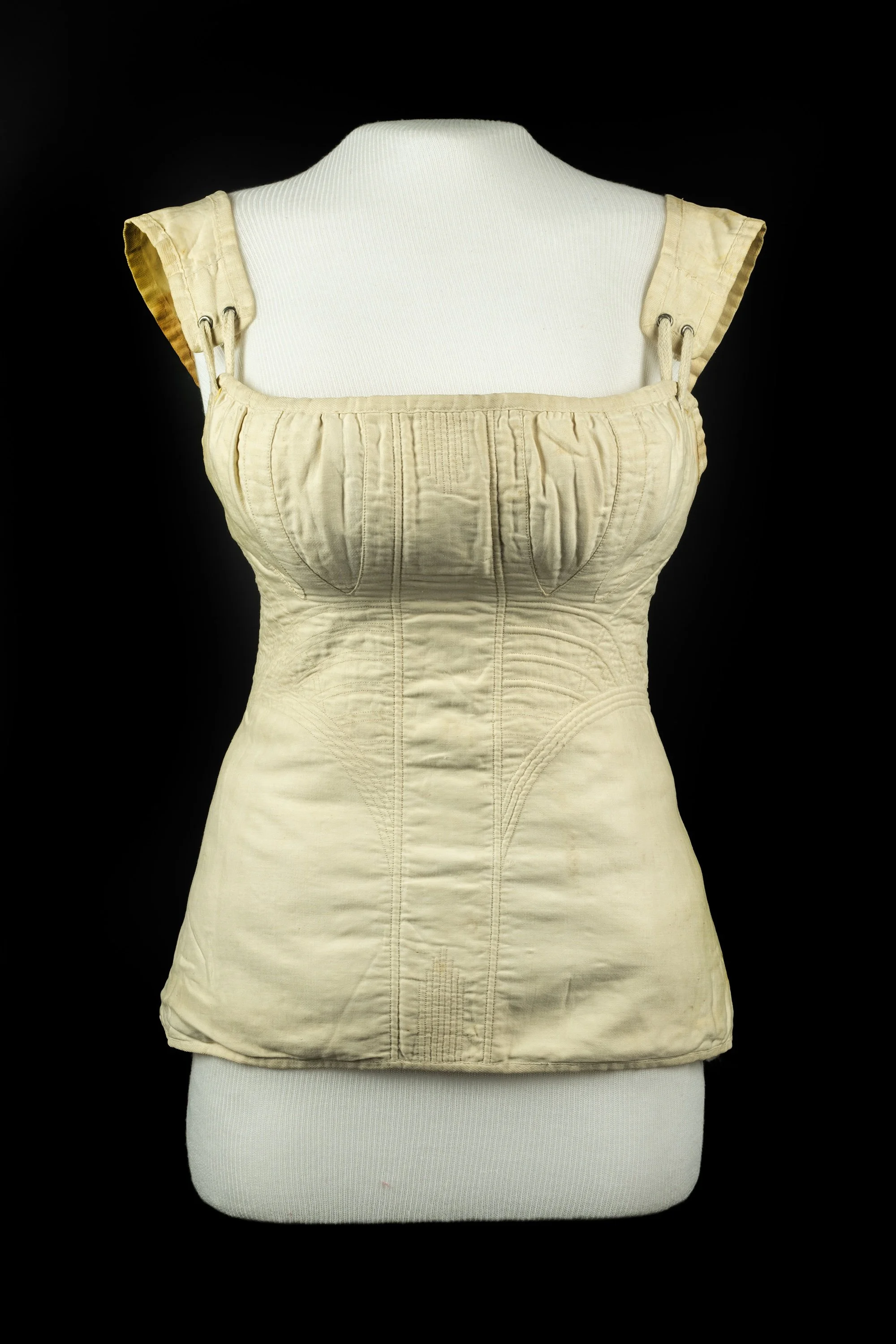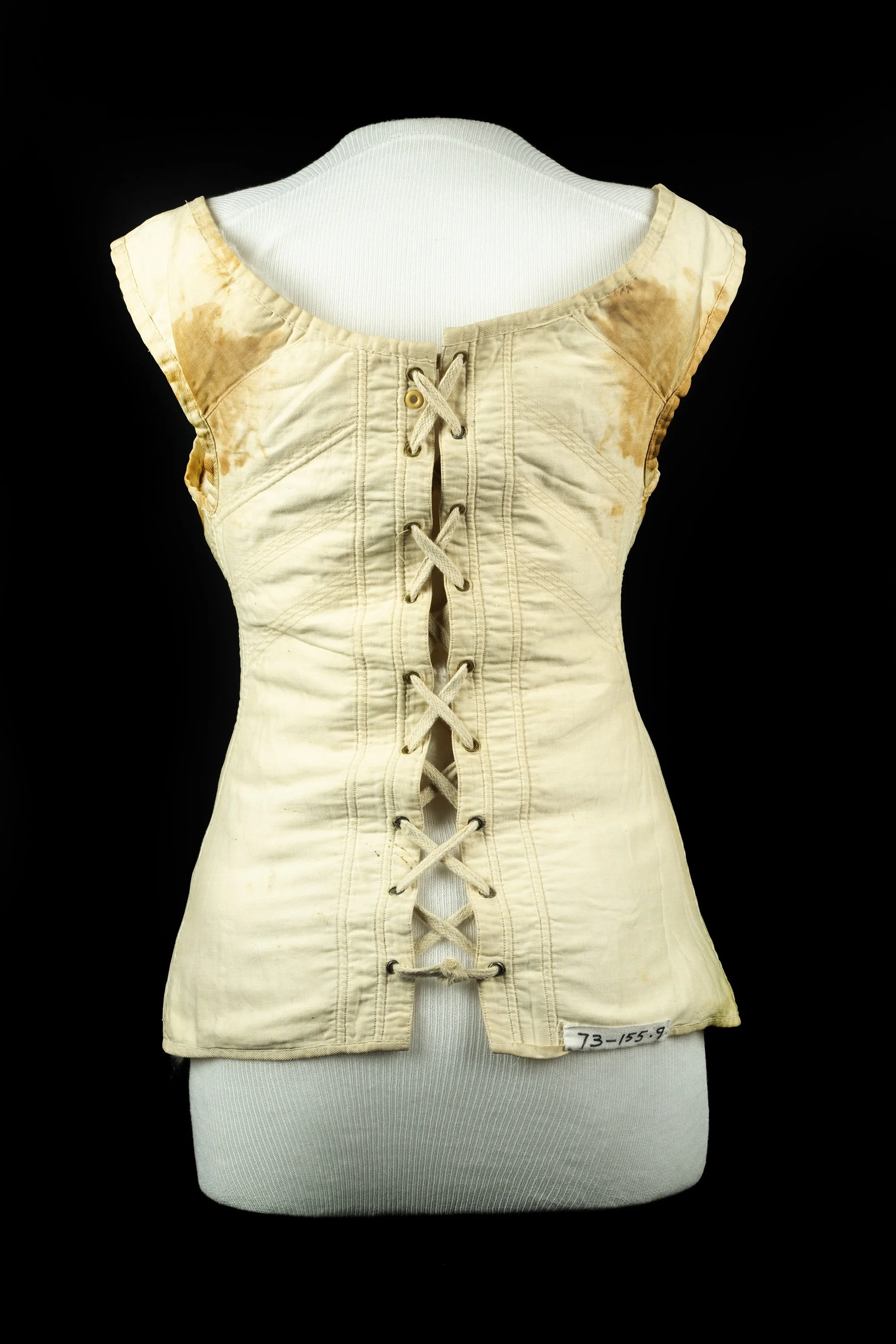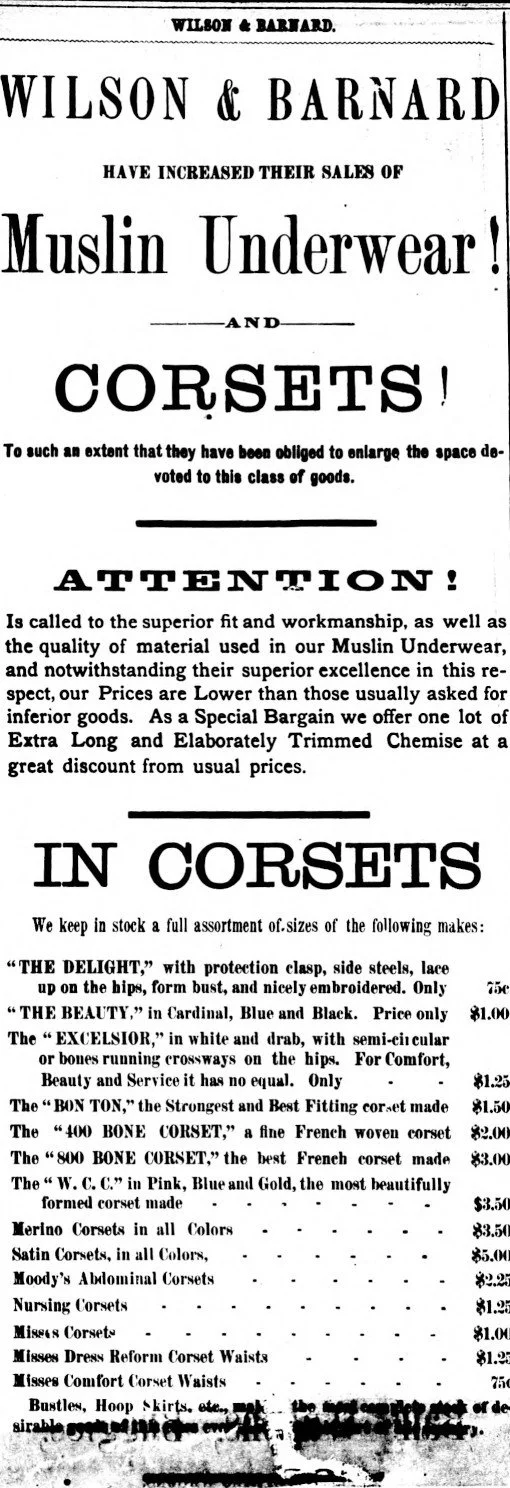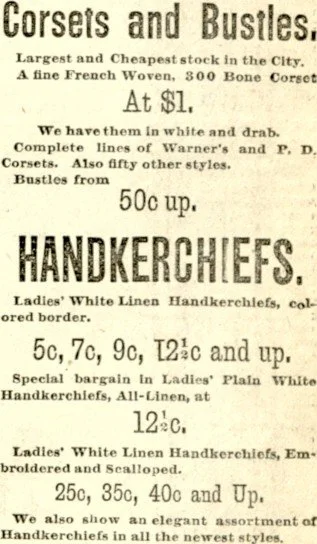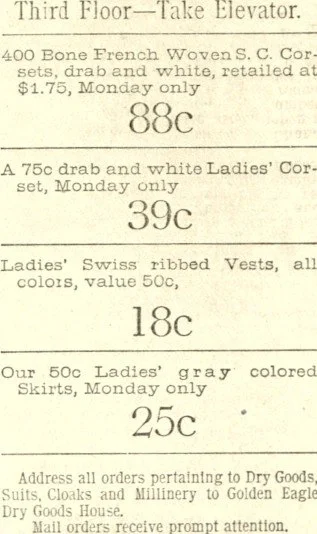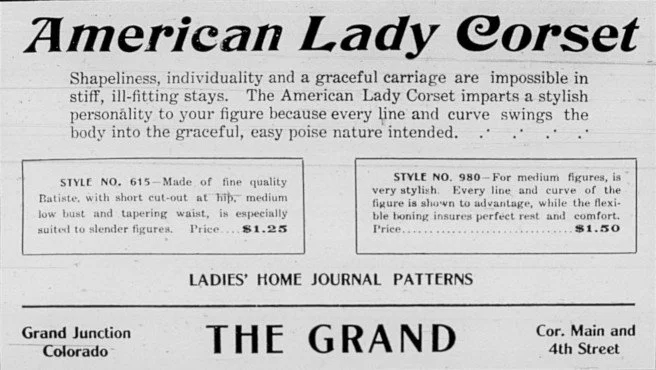From the Rocky Mountain Daily, 1923
Take a deep breath, and step back in time…
Take a look at some of the historical pieces that inspire our line.
1907 Bon Ton Corset
We dated this corset to about 1907-09, based on ads from Colorado Newspapers. Unfortunately, this model is too delicate to photograph on a mannequin.
Collection:
History Colorado
Year
1907-1909
1902 Ribbon Corset
We dated this corset to about 1902, based on an abundance of advertising and extant corsets of the same brand/style in other collections. Each of these ribbons is sewn separately.
Collection:
History Colorado
Year
1902-1905
1830 Boneless Corset
This is impossible to date because it has no maker’s mark. This piece is entirely handsewn. Shown below is a recreation with a wooden busk, and an advertisement from 1828
Collection:
History Colorado
Year
1825-1840
1890s Satin Channel Corset
This is impossible to date because it has no maker’s mark. We know it was worn by a girl born in 1889. The style looks similar to the 1890s-1900s, so she probably wore it as a preteen. It has a 22” waist and looks unworn. Pictured is an ad from a 1900 newspaper.
Collection:
History Colorado
Year
1899-1905
I was able to get in touch with the donor of this incredible piece!
It starts in 1865 in Tennessee, when a man named William Redden shot and killed his former CO, an officer in the confederate army. He encountered him at a bar and the brawl went sideways. William was arrested and put in jail.
Jail in 1865 Tennessee is a joke. William’s brothers busted him out of prison, and their families relocated to unincorporated territory in what is now Oklahoma.
Fast forward ten years. 1875. William’s brother, John, is tired of living on the run with his wife. They relocate to the middle of nowhere, which was the city that would later be called Denver. John changed his name to “Zachary” and lived under this pseudonym to avoid extradition to TN.
1889 Zachary and his wife are running a boardinghouse in Denver, on Logan St downtown. They have a daughter named Nellie, who is the little girl who wore this corset. Like many surviving pieces, this was bought for a teenager who decided, for reasons known only to teenagers, to never wear it. There are no flaws in the corset that we could find. The corset was placed in a trunk and forgotten about for a hundred years.
Nellie was married sometime in the 1910s to a Lithuanian immigrant staying at her parent’s boardinghouse. His name is Tony Markules, which he anglicized to Tony Macara. He worked for the Boulder Mining Company at the Centennial Mine #5, in what is now the city of Centennial.
1880-90 Woven Corset
It is impossible to date this model because it lacks any branding inside. I found ads from 1882-1890 in Colorado newspapers advertising several models.
Collection:
History Colorado
Year
1880-1890
1860s Mended Bodice
This piece began it’s life as a silk bodice for an evening dress. According to the donor record, it was worn in the 1860’s in the Boulder valley. A later wearer chopped up the bodice into a fashionable ladies’ swiss waist. If you look inside, there are panels where the bodice was extended, and the french seams end awkwardly in the armscye of the side back panels. A fun example of mending but very frustrating for our prospects of copying a swiss waist. The below articles are about the wearer, Mrs. Robert Hauck, in 1887-89, published in the “Erie” social section. Her husband passed in 1908.
Collection:
History Colorado
Year
1860s
1907 American Lady Corset
The American lady 980 is designed for “medium figures” from an ad in 1907. The company “American Lady” is based out of Michigan. This corset was made for a woman with a 30-32” waist.
This corset has bones made out of “Rustno”. These are thin, flat, steel bones covered with paper to prevent rust, finished with boning tips. The bones are different sizes: 10mm, 4mm, and 13mm. Bones are held in place with cut strips of fabric that are not tape. These strips are a basketweave and probably cotton. The bones have poked through the fashion fabric in several places on this corset, all at the top of the bodice, indicating stress points. From these ruptures we can see there is an interfacing between the bones and the cotton fashion fabric of the piece. The interfacing is likely linen canvas. It is woven in a loose plain weave. We think this may be buckram, the definition being “plain weave linen coated in glue”, a thinner, lighter version of the fabric used for hats.
The grommets in the back are clustered at the waist and made to be tightened with two large loops. All grommets are metal and original to the piece, probably aluminum. The lacing may be original to the piece and has no aglets. There is a waist tape made of a diamond weave, a broken twill weave. The tape is probably cotton. The edges are finished with a tape cut on the straight grain made of a different fabric. The edges of this tape are extra long and tacked back clumsily. It is original to the piece.
Collection:
History Colorado
Year
1907




